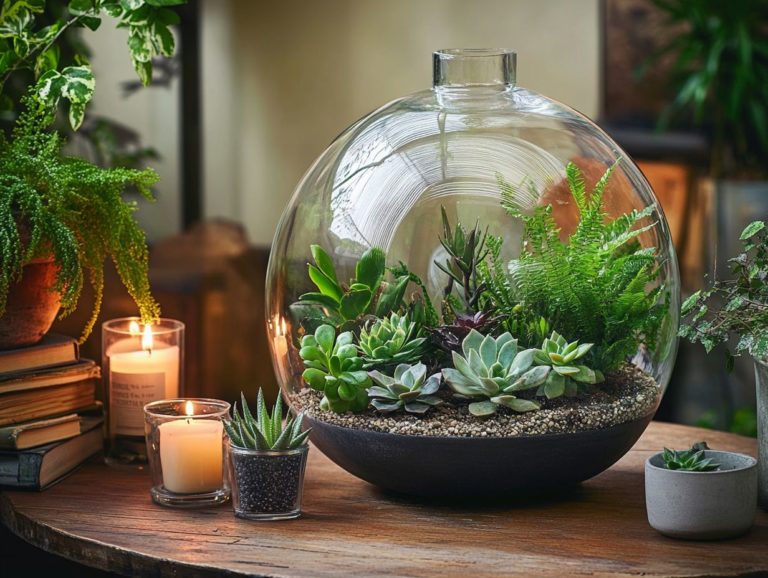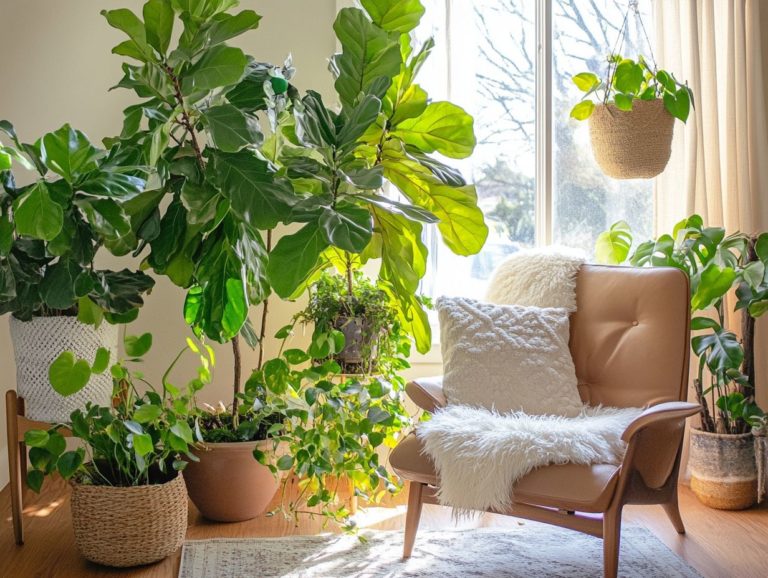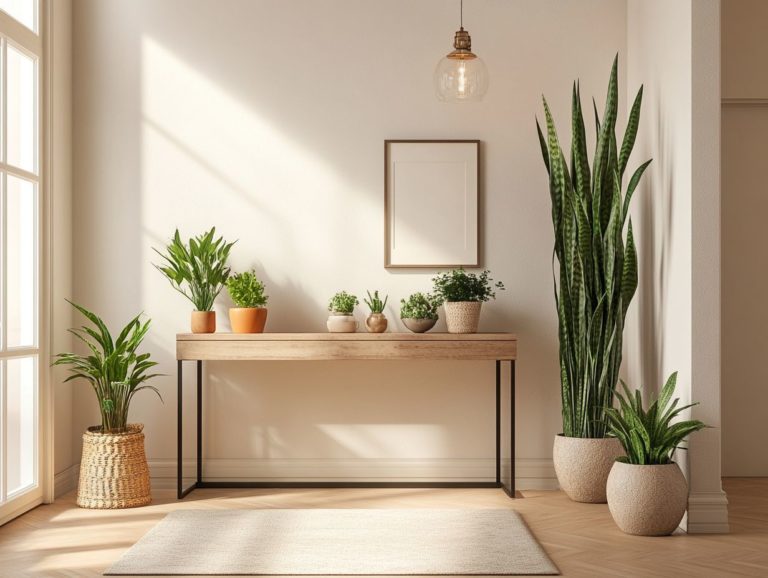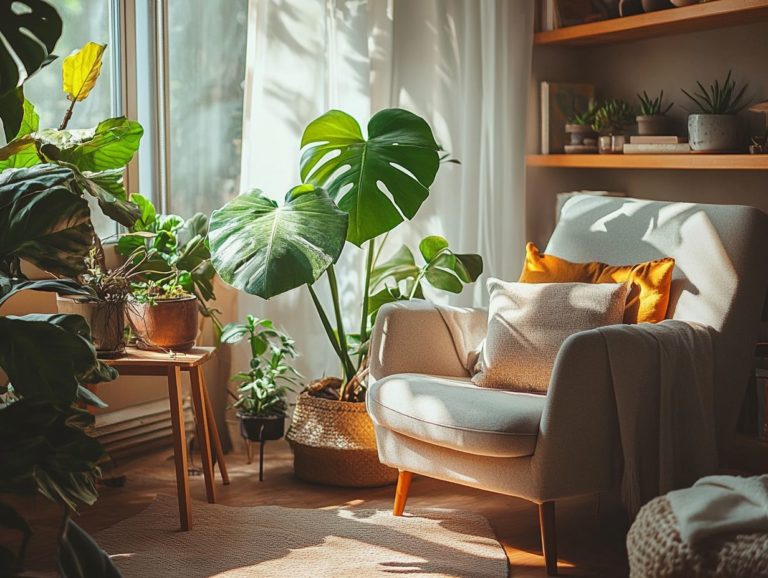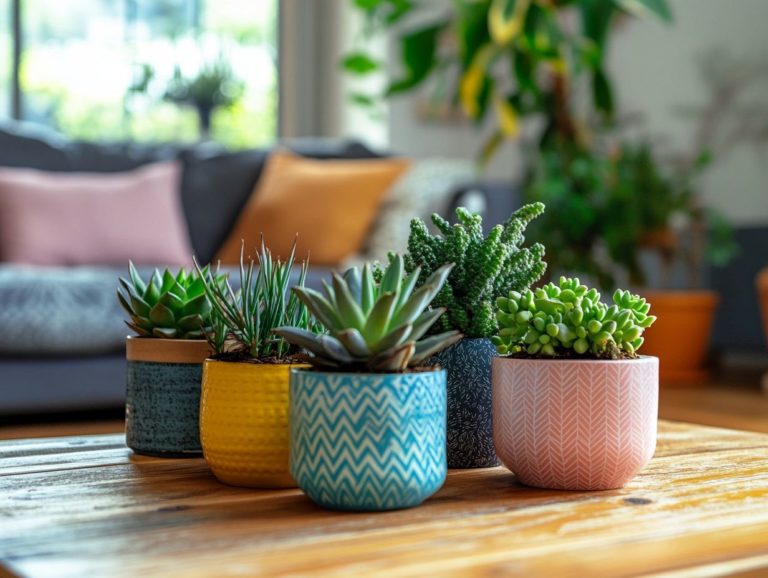How to Use Indoor Plants to Brighten Your Home
Indoor plants are not merely decorative elements; they offer a multitude of benefits that can transform your living space. By improving air quality and elevating your mood, these green companions add a vibrant aesthetic to your home. This guide will help you choose the right indoor plants, find their optimal spots, and master their care needs.
You’ll discover innovative ways to integrate them into your decor while exploring options for specific needs, such as low-light conditions and air purification. Let s transform your home into a green oasis now!
Contents
- Key Takeaways:
- The Benefits of Indoor Plants
- Choosing the Right Indoor Plants
- Placement and Care for Indoor Plants
- Using Indoor Plants for Home Decor
- Indoor Plants for Specific Purposes
- Frequently Asked Questions
- What are some benefits of using indoor plants to brighten your home?
- How do I choose the right indoor plants for my home?
- Can I use artificial plants instead of real ones?
- How should I care for my indoor plants?
- Where should I place my indoor plants for maximum impact?
- What are some creative ways to incorporate indoor plants into home decor?
Key Takeaways:
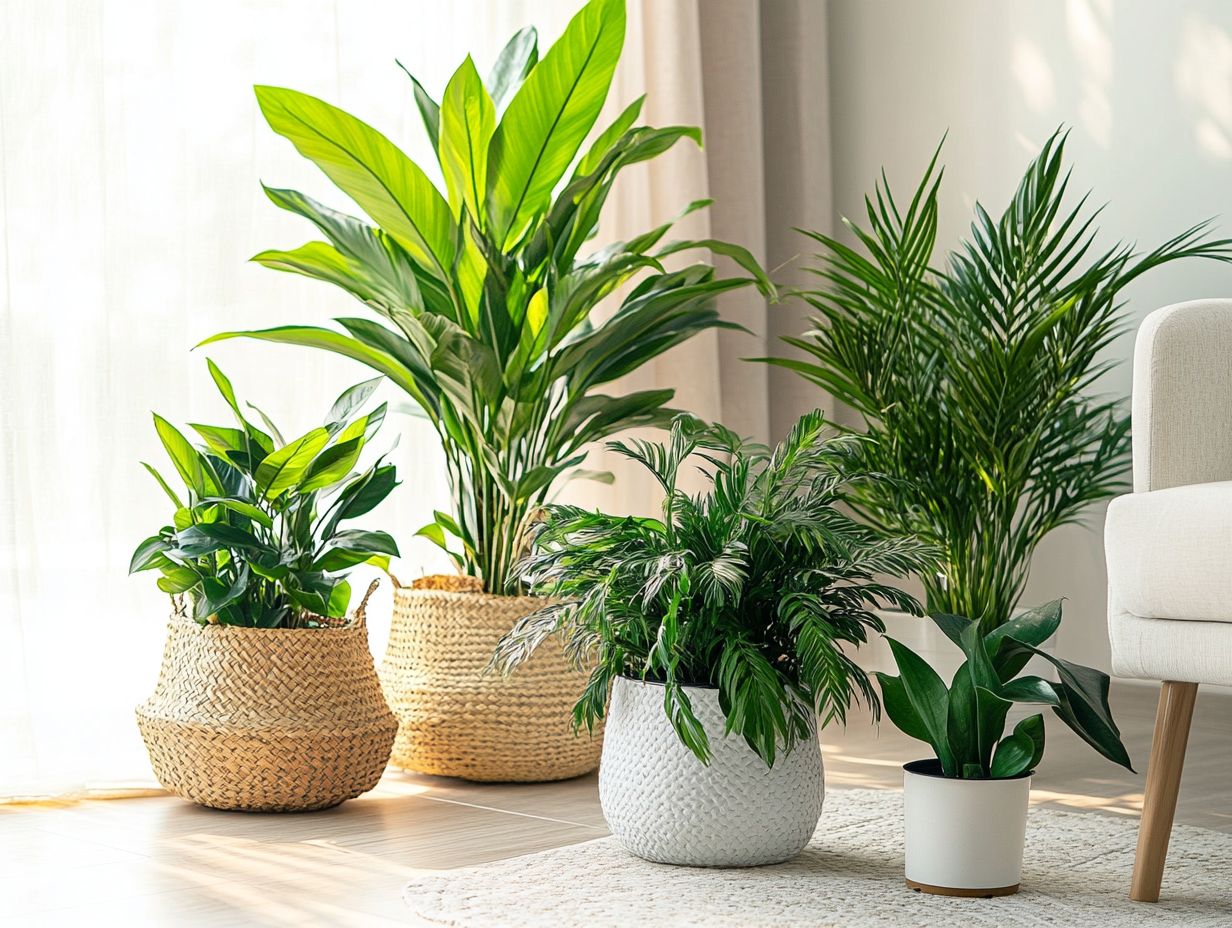
- Indoor plants not only improve air quality but also boost mood and productivity.
- When choosing plants, consider lighting, space, and maintenance needs.
- Maximize your indoor plants by placing them strategically and incorporating them into your home decor for a fresh touch.
The Benefits of Indoor Plants
Indoor plants provide a wealth of benefits that enhance your living spaces. They bring natural beauty, vibrant colors, and significant health advantages.
In today s urban environment, incorporating plants into your decor can turn your home into a joyful sanctuary filled with positive energy. These plants can improve air quality and create an ambiance that nurtures well-being.
Improving Air Quality and Mood
Plants that clean the air are essential for enhancing indoor air quality and uplifting your mood. They offer tangible health benefits that can truly transform your living space.
The Peace Lily stands out for its stunning blooms and impressive ability to filter harmful toxins like formaldehyde and benzene. The Snake Plant, known for its resilience, absorbs carbon dioxide and releases oxygen at night, making it a great choice for your bedroom.
The Boston Fern boasts lush fronds that help remove pollutants and add humidity to the air, alleviating dry skin and respiratory issues. By including these plants in your home, you can create a refreshing atmosphere that promotes positive energy and boosts productivity.
Choosing the Right Indoor Plants
Selecting the perfect houseplants requires careful consideration of several factors, including plant species, care requirements, and the unique conditions in your indoor garden. This thoughtful selection ensures that your plants thrive and enhance the aesthetic appeal of your living space.
Factors to Consider
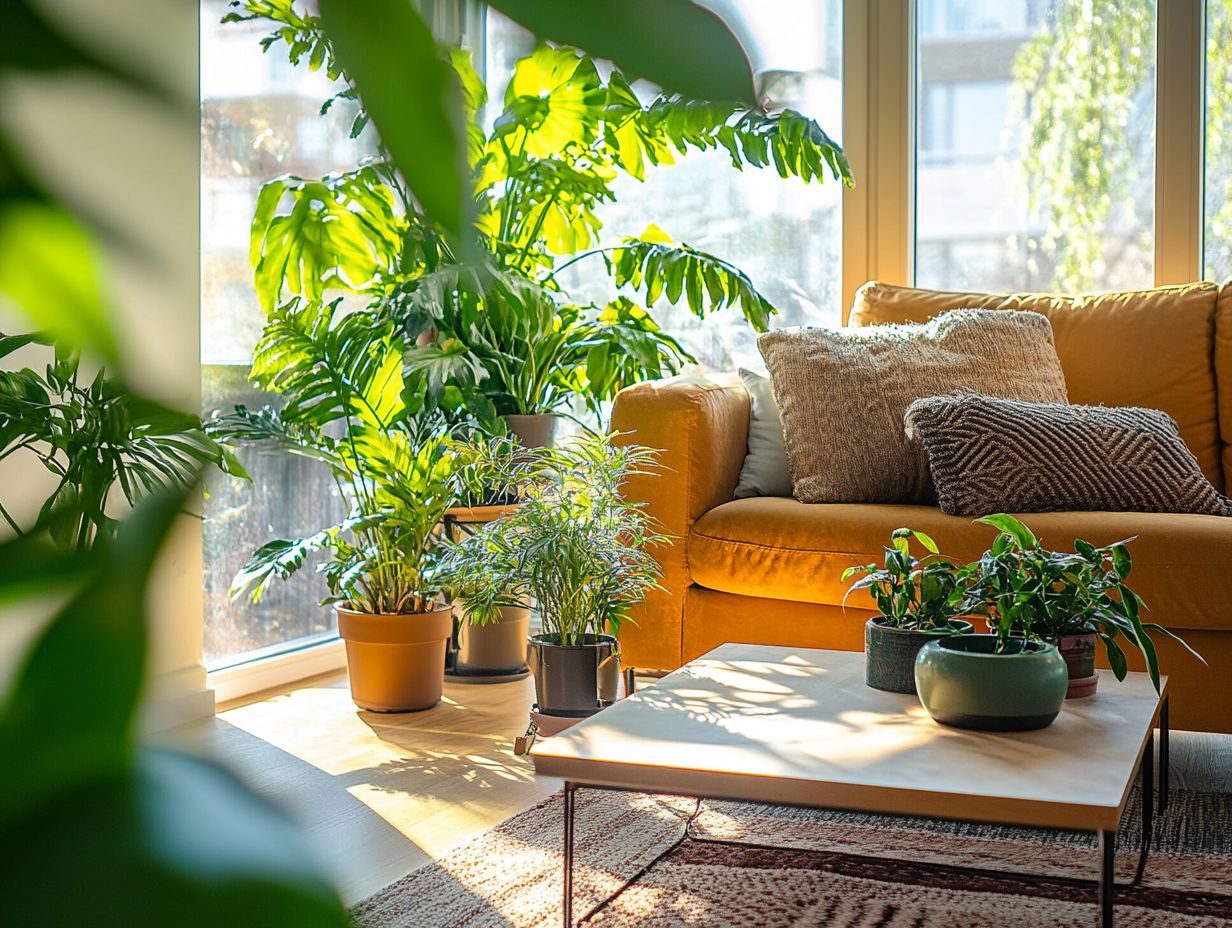
When choosing indoor plants, consider key factors such as the types of plants that suit your ambient light levels, available floor space, and how you envision your plant arrangement enhancing the room’s atmosphere.
Different plant varieties have unique lighting preferences. Some thrive in bright, direct sunlight, while others do well in low-light conditions. For example, snake plants and pothos are great for dim corners, while succulents and cacti prefer sunny sills.
Strategic arrangements are vital for maximizing floor space. Using vertical planters or tiered stands can create an eye-catching display. Hanging plants add layers to your plant aesthetics without taking up valuable ground space.
By understanding how each plant reacts to its environment, you can cultivate a lush, thriving indoor garden that beautifully complements any room s ambiance.
Placement and Care for Indoor Plants
The placement and care of your indoor plants are essential for their thriving. Position them in optimal locations where they can soak up adequate light while enhancing the aesthetic appeal of your living space.
These plants can serve as stunning decorative focal points in the realm of interior design, adding both beauty and vitality to your environment.
Optimal Locations and Maintenance Tips
To cultivate thriving plants, it s essential to select optimal locations tailored to their specific care needs. Effective maintenance strategies also enhance the decorative touch in your indoor jungle.
Choosing a spot that offers the right amount of light is paramount for thriving plants. For example, Pothos flourishes in low-light areas but appreciates a few bright spots now and then. On the other hand, Fiddle Leaf Figs thrive in indirect sunlight to avoid that dreaded leaf scorch.
Spider Plants are wonderfully adaptable, comfortably adjusting to various lighting conditions, making them ideal for diverse areas in your home.
Layering plants of varying heights can create captivating visual interest. Positioning taller specimens like the Fiddle Leaf Fig at the back and shorter ones such as Spider Plants at the front adds depth and dimension to your arrangement.
Regular watering, fertilization, and pruning keep your plants vibrant and healthy, allowing your indoor oasis and houseplants to truly shine.
Using Indoor Plants for Home Decor
Incorporating indoor plants into your home decor does more than just add a decorative flair; it elevates the entire aesthetic, transforming your spaces into a botanical haven. A place of natural beauty that radiates warmth and vitality.
Creative Ideas for Incorporating Plants into Your Space
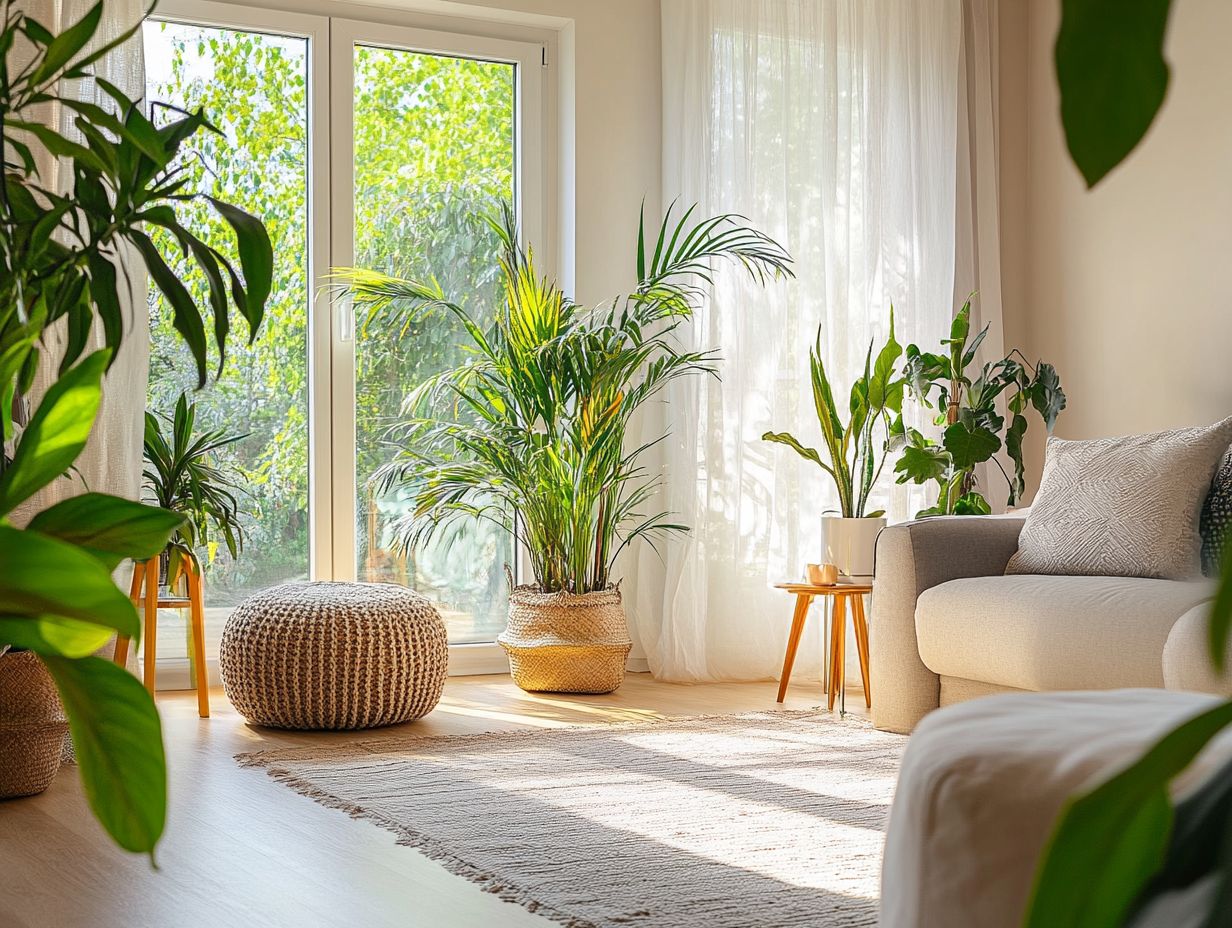
Creative ideas for incorporating plants into your space can transform everyday areas into stunning displays. These arrangements highlight the green thumb abilities of any enthusiast.
Thoughtful plant arrangements can serve as engaging table centerpieces or captivating wall decor that elevate your environment.
One effective approach is to showcase mixed greens in elegant ceramic pots. This provides an eye-catching contrast against neutral backgrounds. You might consider incorporating trailing vines alongside upright foliage to create dynamic visual texture.
When selecting plants, aim for a variety of leaf shapes and colors to enliven your space. Pairing glossy monstera leaves with delicate ferns can provide a refreshing look, showcasing organic shapes and soft textures.
Using floating shelves to display an assortment of potted plants draws the eye upward, making your rooms feel more expansive while highlighting seasonal favorites. The impact of such creative plant arrangements as focal points not only enhances your aesthetic appeal but also fosters a sense of tranquility and connection to nature.
Indoor Plants for Specific Purposes
You can select indoor plants with specific intentions in mind, whether to improve air quality or to thrive in low-light areas. This thoughtful approach enables you to customize your choices according to your individual needs and the unique conditions of your space.
Start your indoor plant journey today to make your space inviting and lively!
Plants for Low Light Environments
In low light environments, choosing the right houseplants is essential. Look for species that thrive and make your space look great.
The Fiddle Leaf Fig truly shines with its large, glossy leaves. It adds a touch of elegance to any room.
Although it prefers bright, indirect sunlight, this plant can adapt and thrive in lower light settings. Even plants like the Pothos can flourish beautifully with a little care and attention.
The Spider Plant is another excellent option, known for its graceful, arching leaves and impressive ability to clean the air. It s not just visually appealing; it also enhances the quality of your indoor atmosphere.
When you place these plants on a shelf or in a hanging planter, they can transform dull corners into vibrant retreats, proving that even in lower light conditions, nature can flourish beautifully.
Plants with Air Purifying Properties
Air-purifying plants not only enhance your health but also infuse your indoor environment with a refreshing sense of positive energy. They are essential additions to your collection of indoor greenery.
Among your best options are the Boston Fern and English Ivy, both celebrated for their remarkable ability to filter out harmful toxins from the air. The Boston Fern thrives in humid environments and prefers indirect light. It needs regular watering to maintain its lush, vibrant foliage.
The English Ivy is incredibly adaptable and can thrive in various lighting conditions. However, it thrives with moderate watering to keep the soil pleasantly moist.
By incorporating these versatile air-cleaning plants into your indoor gardening strategy, you enhance the aesthetic appeal of your space while significantly improving air quality. This fosters a healthier and more inviting atmosphere filled with natural elements.
Explore how Feng Shui can inspire your decorating with plants to enhance family living. Discover tips for keeping indoor plants thriving and transform your living space today!
Frequently Asked Questions
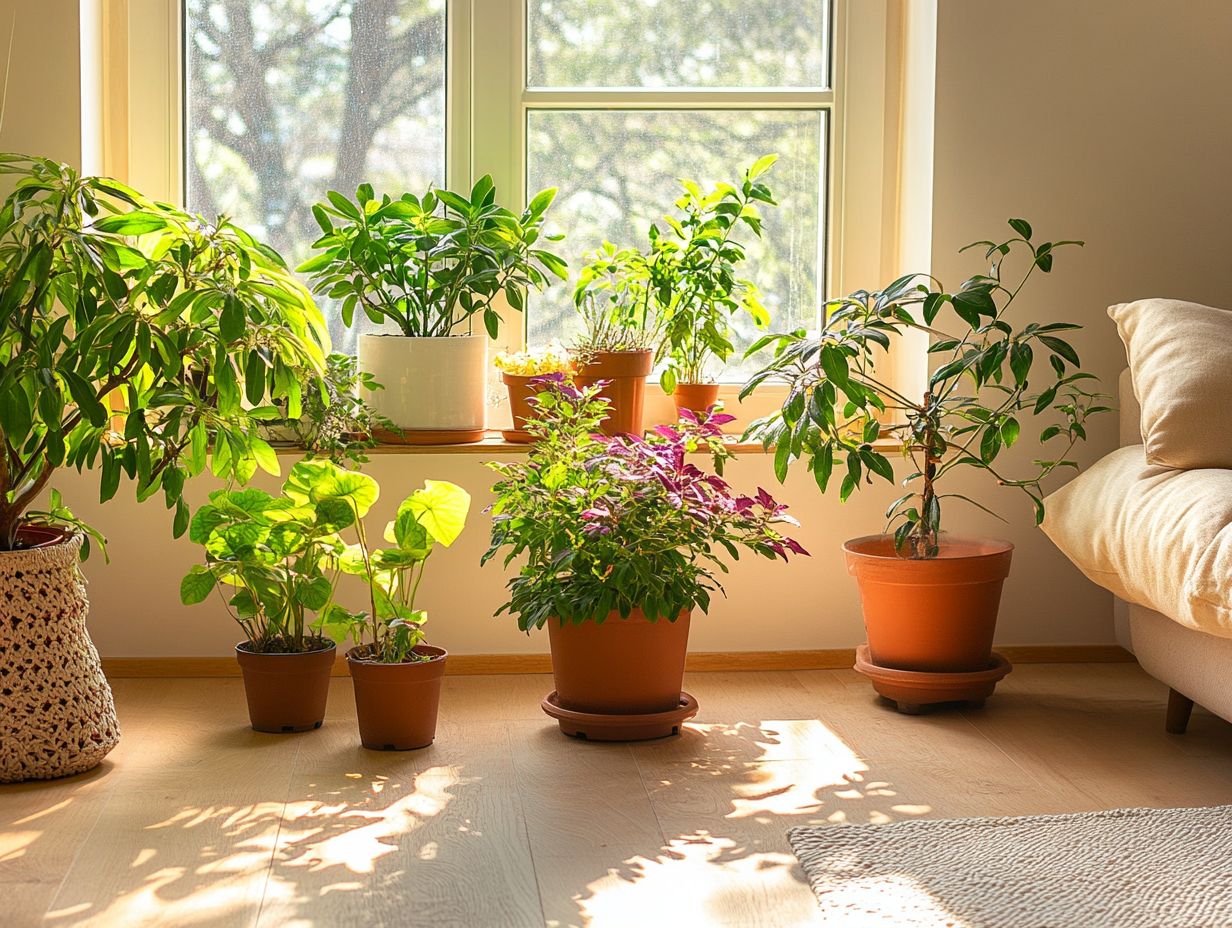
What are some benefits of using indoor plants to brighten your home?
Indoor plants not only bring vibrant color but also clean the air and reduce stress. They are a must for any home!
How do I choose the right indoor plants for my home?
Consider factors like ambient light, humidity levels, and plant care needs when selecting indoor plants for your home.
Can I use artificial plants instead of real ones?
While artificial plants may be low maintenance, they don t offer the same health benefits as real plants and may not have the same visual interest.
How should I care for my indoor plants?
Each plant species has different care instructions. Generally, make sure to water them regularly and provide adequate light and humidity to ensure they flourish.
Where should I place my indoor plants for maximum impact?
Place your plants in areas where they will receive natural light, such as near windows or in well-lit rooms. Group plants together to create a decorative focal point.
What are some creative ways to incorporate indoor plants into home decor?
You can use hanging planters, wall-mounted planters, or even create a living wall with a variety of plant types. This adds a unique touch to your home while enhancing your interior design.

